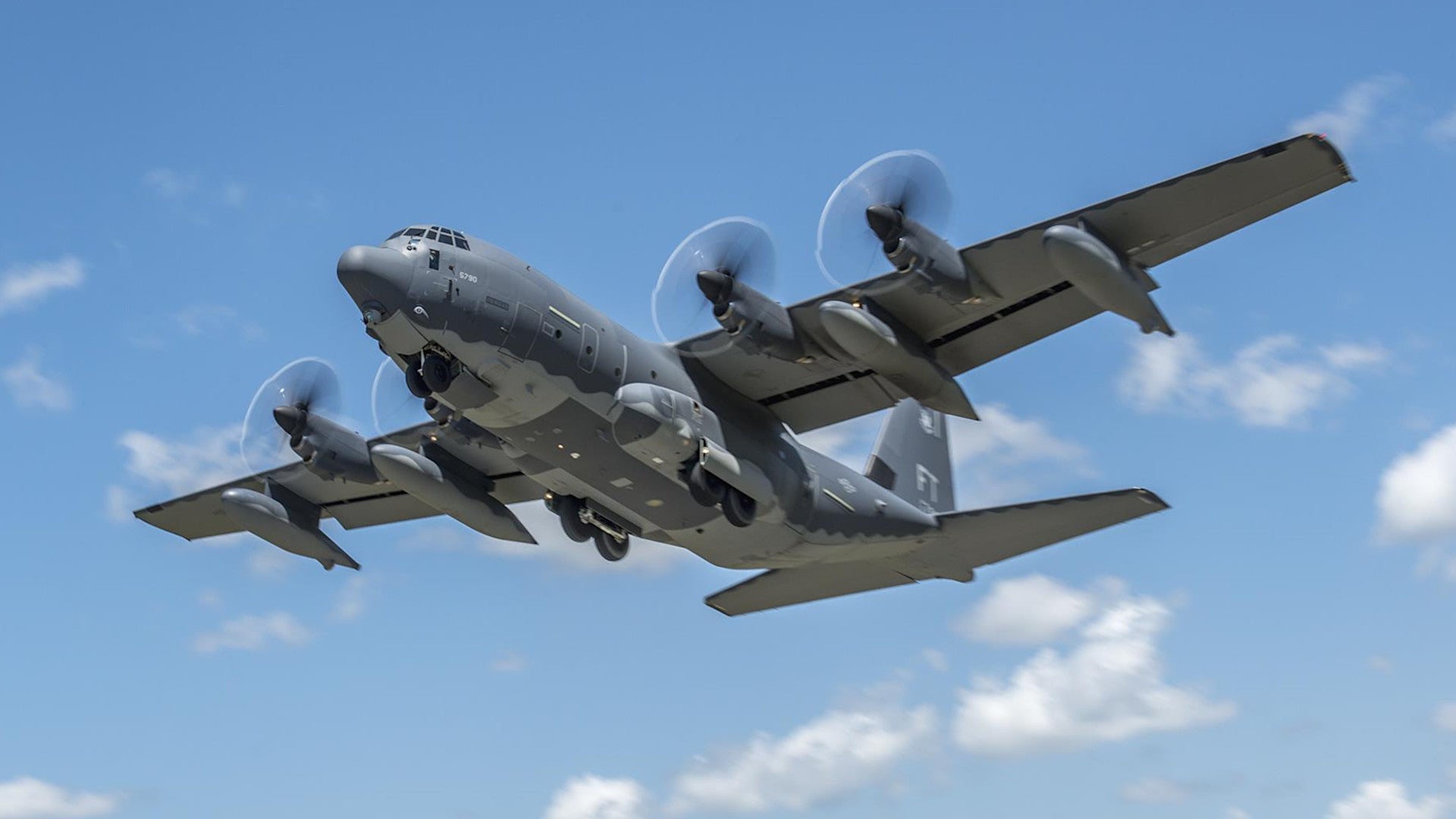The U.S. Air Force wants to leverage the cameras in the directional infrared countermeasures system on the HC-130J Combat King II rescue aircraft and turn them into an augmented vision system, similar in general concept to the Distributed Aperture System on the F-35 Joint Strike Fighter, to give the crew better situational awareness. The service has nicknamed the project Sauron’s Eye, a reference to chief villain Sauron’s all-seeing magical eye in J.R.R. Tolkien’s The Lord of the Rings trilogy, and the results could easily find their way onto any other aircraft with the similar self-protection systems installed.
On Apr. 30, 2019, the Air Force Materiel Command (AFMC) first issued a request for contractors to send in white papers detailing their proposals for how to modify Northrop Grumman’s Large Aircraft Infrared Countermeasure (LAIRCM) system on the HC-130J to meet these requirements. The Combat King II first entered service in 2013 and LAIRCM is standard equipment for the plane during combat search and rescue operations.
“The HC-130J aircraft configuration, as it stands today, physically limits crew scanning capabilities to the paratroop door windows and the front windows of the aircraft,” the contracting notice, which AFMC posted on the U.S. government’s main contracting website FedBizOpps, explained. “To meet current mission requirements, additional SA [situational awareness] devices are required to provide HC-130J crew members significantly enhanced capabilities to scan for factor threats around the aircraft as well as to assist with personnel recovery.”
LAIRCM already offers the basic building blocks of an augmented vision system. Designed to counter short-range heat-seeking surface to air missiles, it employs a Missile Approach Warning System (MAWS) consisting of five infrared video cameras positioned around the plane to spot those incoming threats. That system then cues a turreted laser, which shines into the missile’s seeker, blinding and confusing it, and throwing it off course.
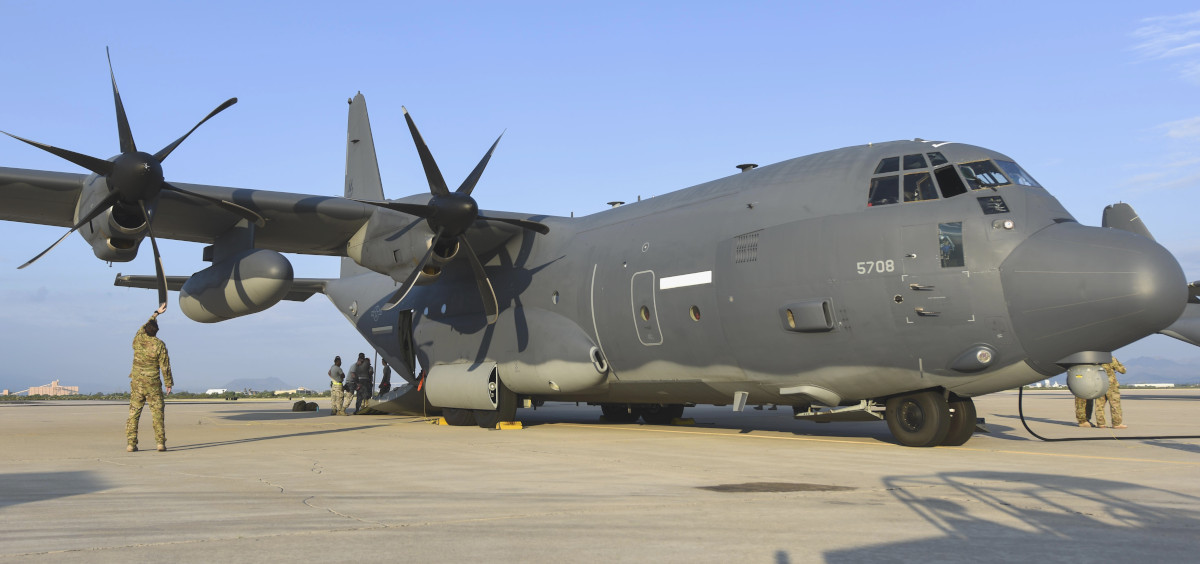
“The current LAIRCM system has five sensors installed on the aircraft which are capable of providing infrared (IR) video display in overlapping 360° views around the aircraft,” the Sauron’s Eye request for white papers noted. “However, it lacks the ability to ‘stitch’ them together.”
What this means is that the crew can only look at the field of view of each individual camera independently. Purpose-built distributed aperture systems, such as the AN/AAQ-37 Distributed Aperture System (DAS) on the F-35, which you can read about in more detail here, feature a central processing component that combines these images, or “stitches them together,” into a single pannable feed.
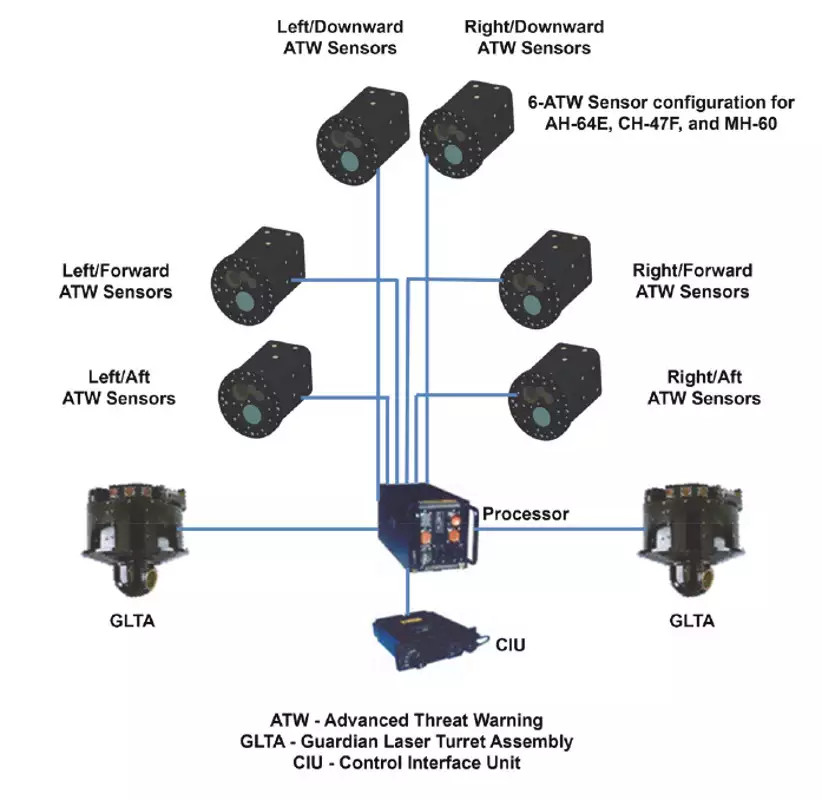
In the case of the Joint Strike Fighter, this feed is then projected straight onto the visor of the pilot’s helmet, allowing them to “see” in any direction they look, even “through” the fuselage. In April 2019, Lockheed Martin announced that they had successfully tested a new modular Pilotage Distributed Aperture Sensor (PDAS) system, which you can learn more about in depth here, that functions in much the same way on Bell V-280 Valor tilt rotor. You can see what the view looks like from PDAS in the video below.
One of the requirements for Sauron’s Eye is to combine whatever processing system might transform the LAIRCM into an augmented vision system with either a virtual reality or augmented reality capability. Possible options for meeting this requirement could include a dedicated virtual reality helmet, a system that sends the video feed to some kind of helmet-mounted display, or a hybrid system that displays the feed on a flat screen, but is viewed in stereoscopic 3D for a more immersive picture.
The latter option, which boom operators employ on the Air Force’s new Boeing KC-46A Pegasus tankers, might offer too much of a limited field of view. It would also prevent the user from immediately understanding the true direction of the threat or object of interest. A helmet-mounted system would ensure that the user is always looking straight at the threat or object of interest, making it just that much easier to communicate that information to other members of the crew.
The potential benefits of adding any sort of augmented vision system onto the HC-130J are obvious. Among its multiple roles, the Combat King II acts as an aerial tanker for combat search and rescue helicopters, which require both aircraft to remain in a relatively fixed position, increasing their vulnerability. Refueling operations also just bring the aircraft into close proximity with other aircraft, which presents its own risks. As noted, the HC-130J’s existing configuration offers limited options for visually monitoring for any potential threats or for monitoring the relative position of the plane in relation to other aircraft or helicopters.
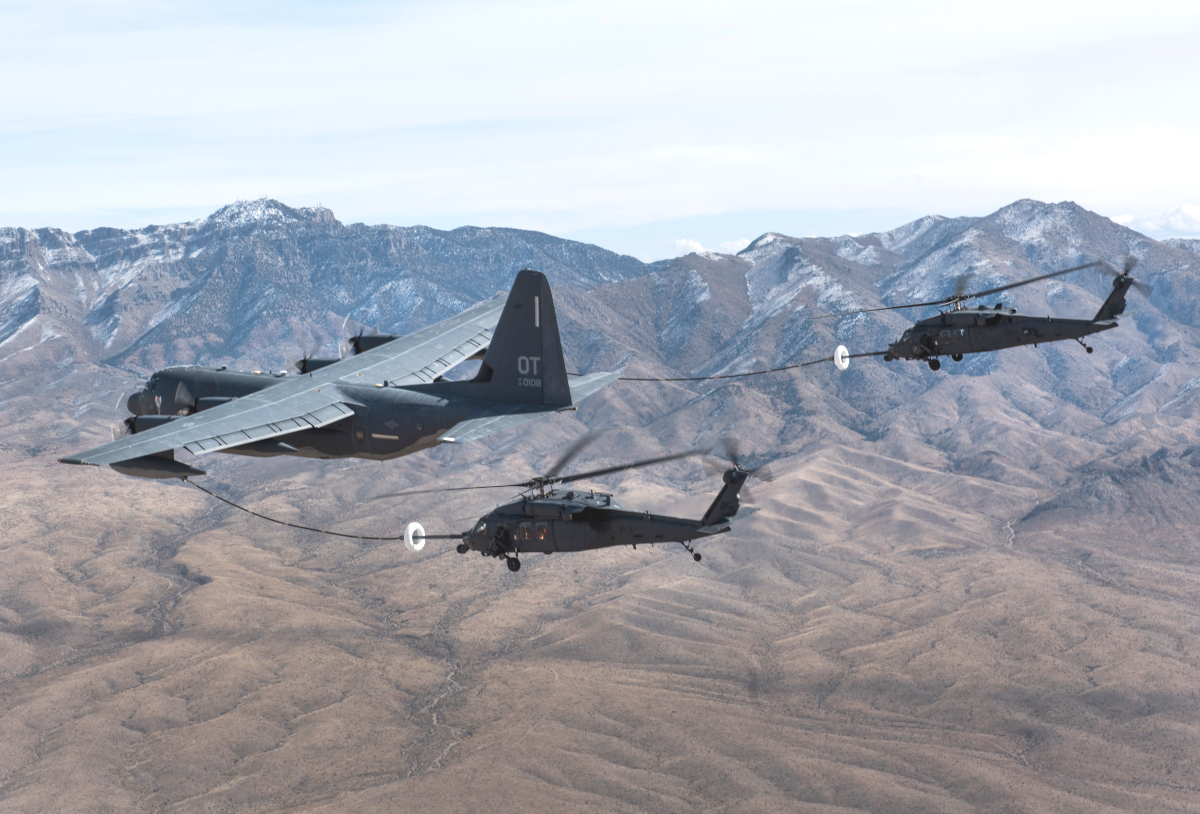
Visual scanning itself is of limited utility, especially at night, when observers would have to rely mostly on seeing the plume of a missile’s rocket motor or tracers from an anti-aircraft gun. The Combat King II does have a sensor turret under the nose with electro-optical and infrared cameras, but this offers only a relatively narrow field of view and could only ever focus on one particular direction at a time. The crew also uses night vision goggles for missions after dark, but these generally have more limited fidelity and don’t offer a way to “see” through the plane.
“Identifying Air Defense Artillery (ADA) engagements even against threats not using tracers would be possible utilizing the IR spectrum. Surface-to-air missiles and maneuverable-portable air defense systems (SAM/MANPADS) engagements from beyond unassisted visual range, and/or from aft of the aircraft could be identified and reacted to, increasing aircraft survivability,” the Sauron’s Eye notice said. “Additionally, this system would reduce crew workload by allowing both visual and electronic scanning to be accomplished simultaneously, thereby reducing the number of aircrew visual scanners required to be posted in windows.”
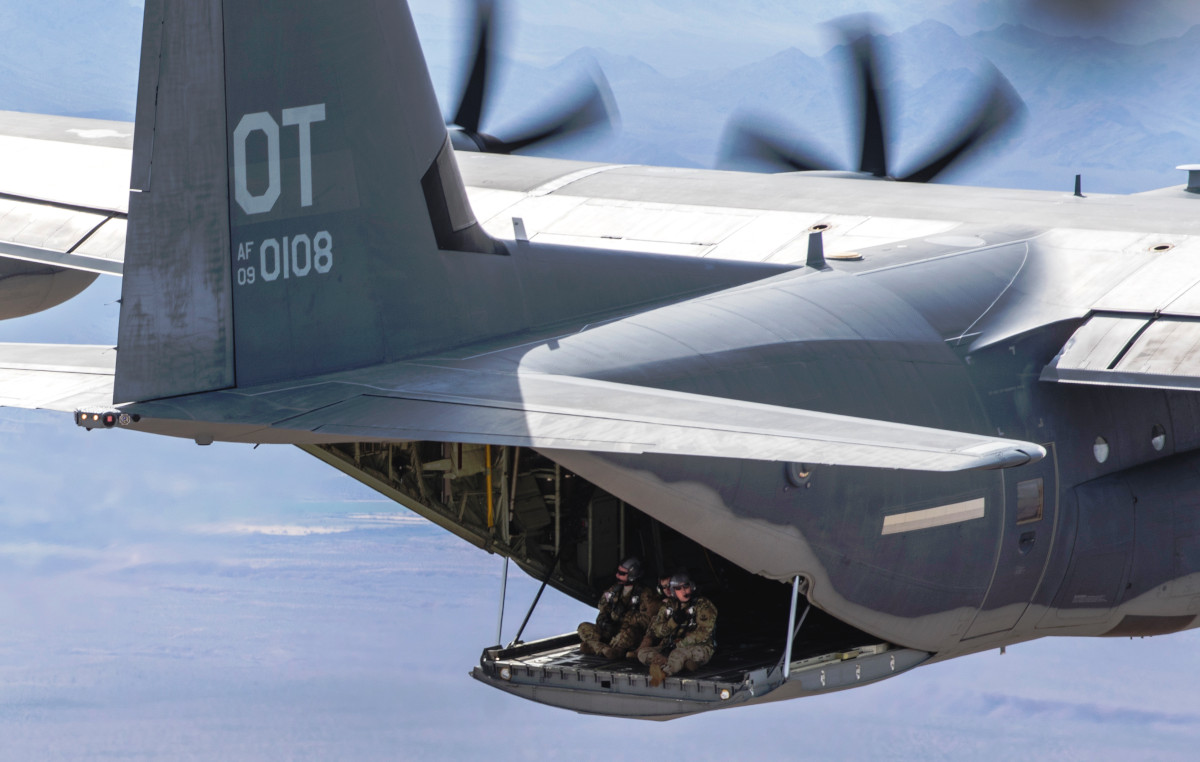
For combat search and rescue operations, Sauron’s Eye could have benefits well beyond scanning for potential threats and “assist with personnel recovery,” as the Air Force’s contracting notice said. Depending on the capabilities of the MAWS’ cameras, it could make it easier to spot things such as a downed aircraft, emergency flares, or infrared beacons, that could help point to the specific location of friendly personnel in need on the ground.
During combat search and rescue operations, an HC-130J also could find itself needing to land in an austere environment using an improvised runway. Smoke, dust, or other obscurants could make it difficult to safely maneuver and touch down, particularly after the sun goes down, increasing the risk to the crew and potentially forcing them to abort the mission. Sauron’s Eye would provide valuable additional situational awareness and another means of monitoring the aircraft in relation to potential hazards during those dangerous operations.

The Air Force wants whatever system can turn the LAIRCM into an augmented vision system to be a roll-on/roll-off arrangement that two airmen can load onto an HC-130J and have set up and ready to go in an hour or less. There’s no fixed timeline yet for when the service might hope to field this add-on system.
But if the final system is so simple that two airmen can install it in a cargo plane within an hour, it could be readily portable to other fixed wing and rotary wing aircraft equipped with the LAIRCM. Even if the specific configuration for the HC-130J doesn’t necessarily translate to other aircraft, the core technology could be applicable for future versions that meet the space, power generation, and other constraints of different platforms using directional infrared countermeasures systems.
The War Zone has already laid out the vast potential benefits of adding distributed aperture systems, in general, for both military and commercial aircraft here. Leveraging an existing system, such as LAIRCM, would only make it easier to add these game-changing features to more platforms and do so with less costly design and modification work. The Air Force isn’t the only U.S. military service to use directional infrared countermeasures, and many American allies also have these systems installed on various fixed and rotary wing aircraft, which could only further help generate interest in Sauron’s Eye well beyond the combat search and rescue community.
Different LAIRCM versions alone are options for all current U.S. military C-130 variants, including special operations MC-130 and AC-130 types, as well as a host of other platforms. This includes, but isn’t limited to, Air Force C-17 transport planes, Air Force and Marine Corps V-22 Ospreys, Marine CH-53 transport helicopters, and Army AH-64 gunships and CH-47F transport helicopters.
Variants of this self-defense suite are also prominent features on U.S. military VIP transport aircraft, including the Air Force’s two VC-25A Air Force One planes, and helicopters, such as the Marine’s VH-3Ds and VH-60s. Air Force KC-135 tankers are set to begin getting this self-defense system in the near future and they’ll be a feature on the Marine Corps’ future VH-92A presidential helicopters. If Sauron’s Eye, or a similar system, can work with other MAWS components, that would only open up even more possibilities, including on certain fighter jets, such as the F-15X Advanced Eagle.
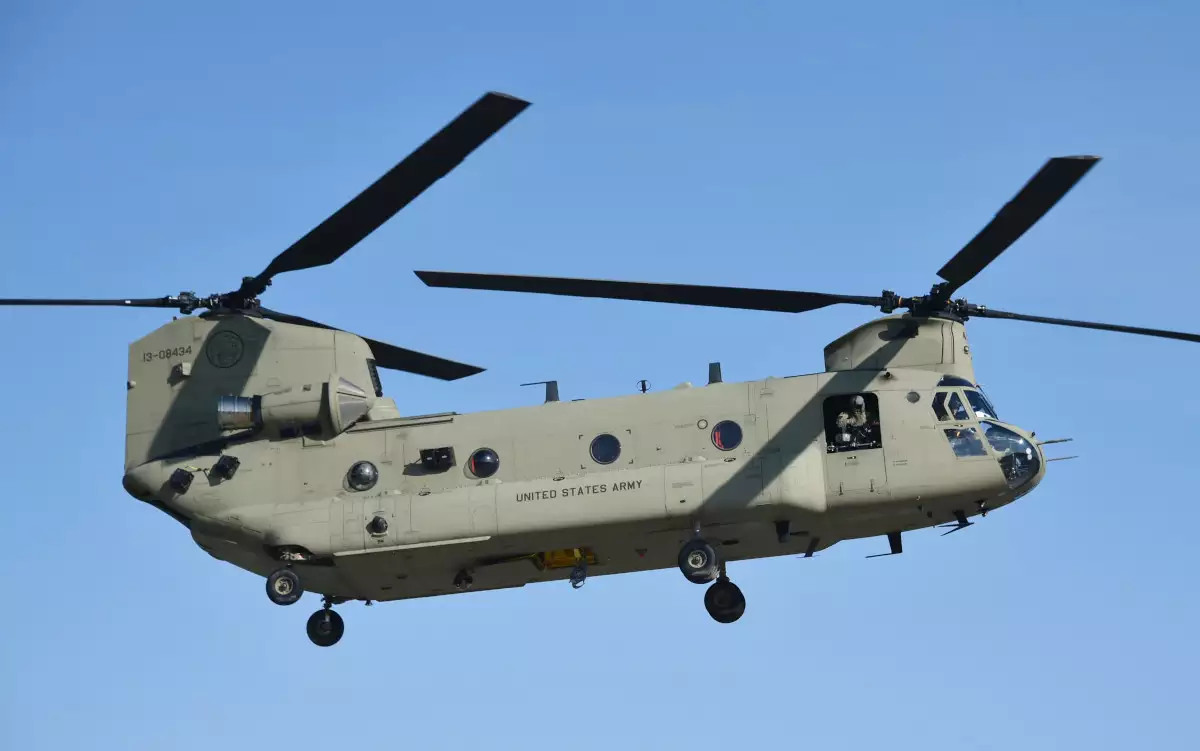
For the C-130 family as a whole, the added situational awareness and ability to better spot threats will be a boon for the aging design. Air Force Special Operations Command (AFSOC), in particular, has been investigating a host of possible options to improve the survivability of its MC-130s in recent years, which you can read about in detail here, in the face of ever improving potential threats. Sauron’s Eye could be one component of a broader upgrade program to ensure the special operations transports remain relevant in higher-end conflicts in the near future.
Depending on the exact nature of the processor that stitches together the LAIRCM camera feeds, Sauron’s Eye could leave a door open for the addition of new functionality in the future, as well. Lockheed Martin has already said that their PDAS system has an open architecture design to make it easier to add in additional sensor fusion capabilities and other features down the road.
Using an artificial intelligence-enable software package, Sauron’s Eye could potentially alert users to non-missile threats or other items of interest it detects. The MAWS is already set up to automatically detect a certain category of threats—infrared-guided missiles—and then cue one of the LAIRCM’s laser turrets to engage it. It could potentially perform a similar operation for non-missile anomalies, but with the plane’s main sensor turret to allow for closer inspection of a particular area of interest. At the very least, it could provide an indication to users of where to look in real-time.
All told Sauron’s Eye would certainly give important and impressive new capabilities to the HC-130J, but it seems the Air Force is laying out a path to quickly adding an “all-seeing” vision system onto a much broader array of aircraft.
Contact the author: jtrevithickpr@gmail.com
